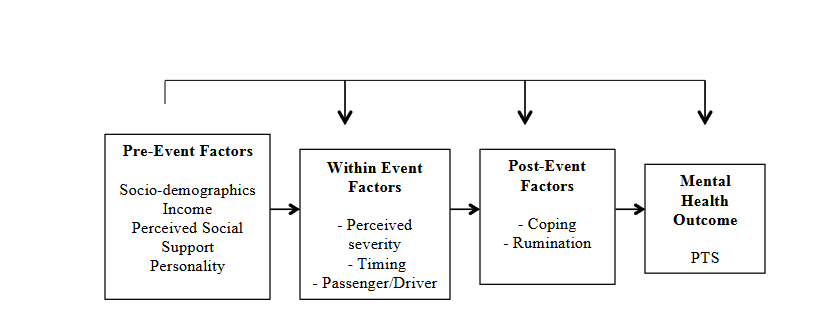The purpose of the current study is to examine the predictive role of the personality characteristics (extraversion, conscientiousness, agreeableness, openness to experience, negative valence, and neuroticism), event related factors such as the perceived severity and timing of the event, coping (problem solving, helplessness, fatalistic, and seeking support coping strategies), and rumination (deliberate and intrusive) processes on the development of PTS and PTG separately on the basis of the Multivariate Risk Factor Model (Freedy et al., 1993) and the Model of Life Crises and Personal Growth (Schaefer, & Moos, 1992), respectively.
Furthermore, another purpose of the current study is to test the combination of the Model of Life Crises and Personal Growth (Schaefer & Moos, 1992), and the Conservation of Resources (COR) Theory (Hobfoll, 1989). The aim of this model combination testing is to investigate the role of the possible changes in the positive driver behaviors experienced by the current sample of the traffic accident survivors who are drivers on their PTG levels.
In the present study, the basic personality characteristics, gender, and, perceived social support have been taken as personal resources, and income level has been taken as the environmental resource. However, all these variables except basic personality characteristics have been taken as control variables. Moreover, the event related factors included timing and perceived severity of the event, and being a driver or a passenger during the accident. Various types of coping responses with the traumatic event and event related ruminations have been taken as post accident variables. Finally, posttraumatic growth and posttraumatic stress have been taken as the dependent variables of the current study.
As the first model proposed (See Figure 3), each of the groups of variables has an influence on the following variable groups.





Recent Comments